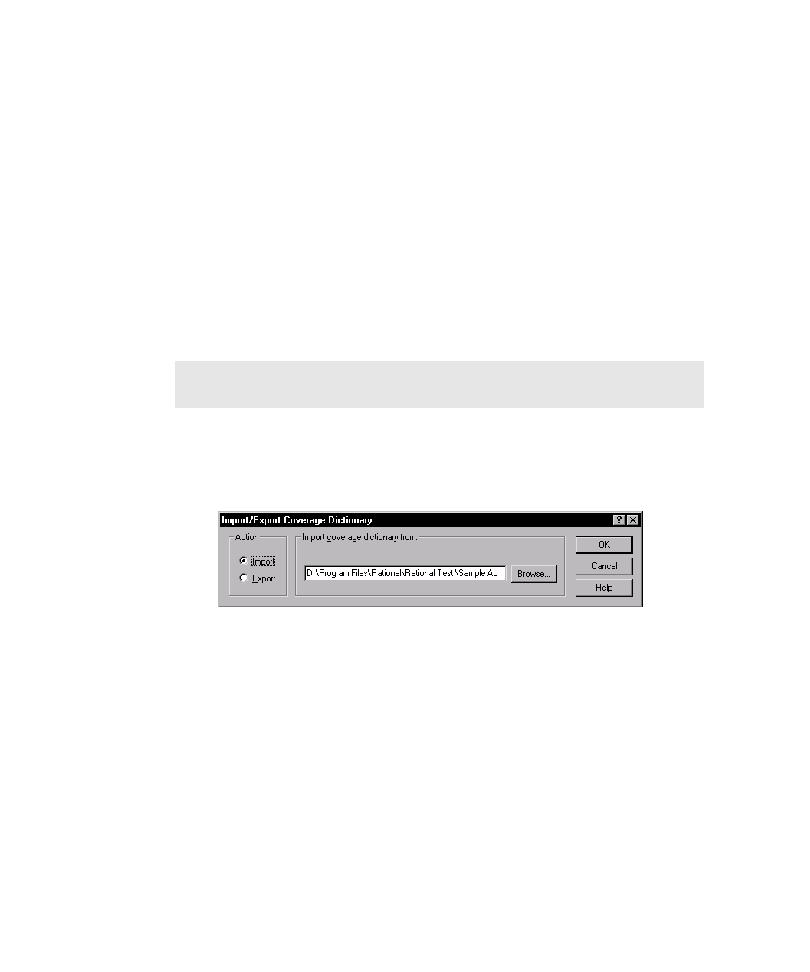
The Coverage Dictionary
calculate code coverage for scripts. If every member of your testing team shares the
same build of the AUT, and saves test data to the same project, then each has access
to the coverage dictionary after the AUT is instrumented.
and save test data to separate repositories, then they can move the coverage dictionary
between repositories to share it. A developer can instrument AUT source files and
export the coverage dictionary for use by testers who only have access to AUT
executable files. A tester can then import the coverage dictionary and use it to obtain
code coverage data on scripts (as long as the scripts run against the executable file
made from the same instrumented AUT). To move a coverage dictionary between
projects, you must export it from one project and import it to another project.
1. Click Tools > Import/Export Dictionary.
3. In the Export coverage dictionary to box, enter the path for the exported
1. Click Tools > Import/Export Dictionary.
2. In the Import coverage dictionary from box, enter the path of the file
or preinstrument the Visual Basic AUT using the stand-alone instrumentor.